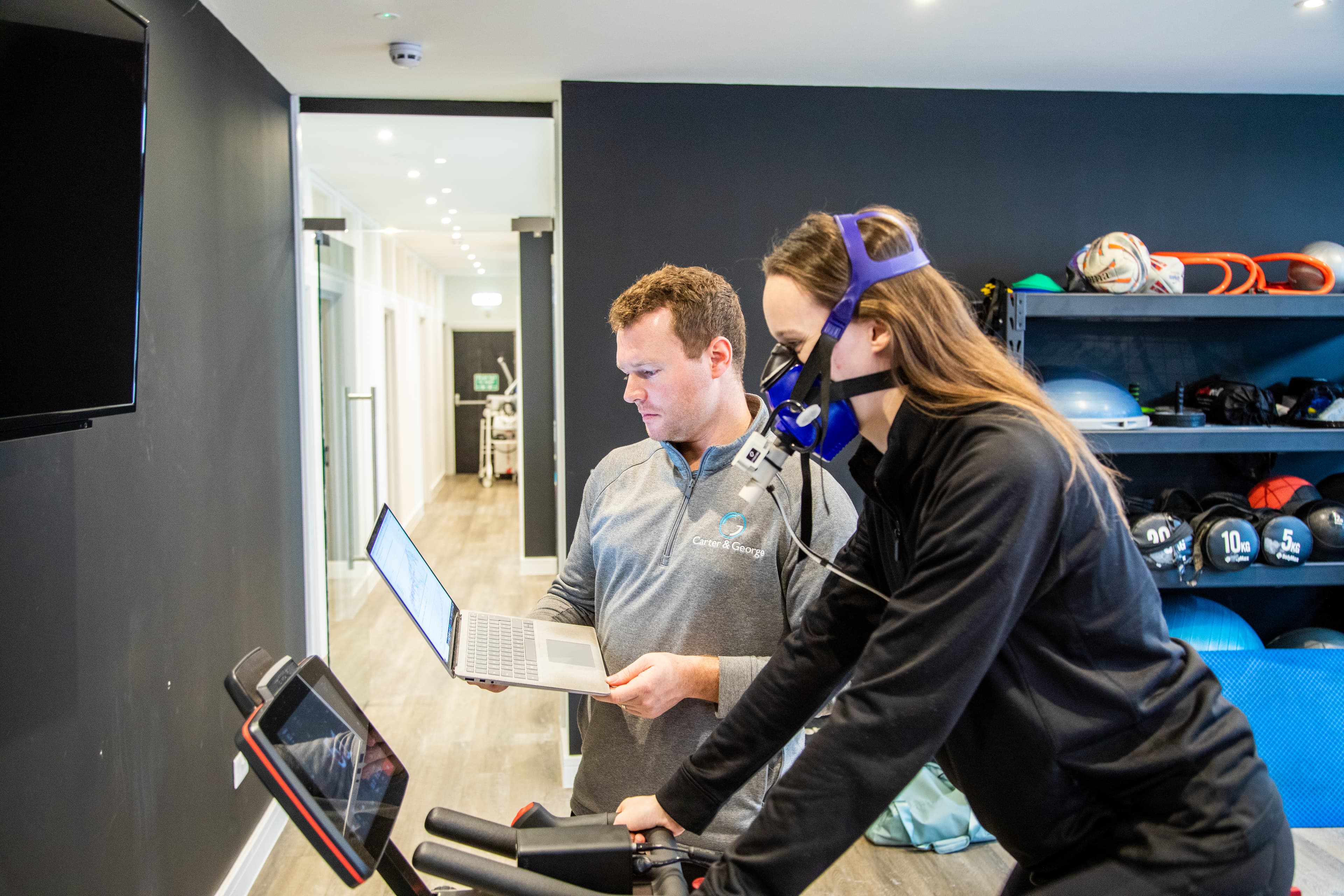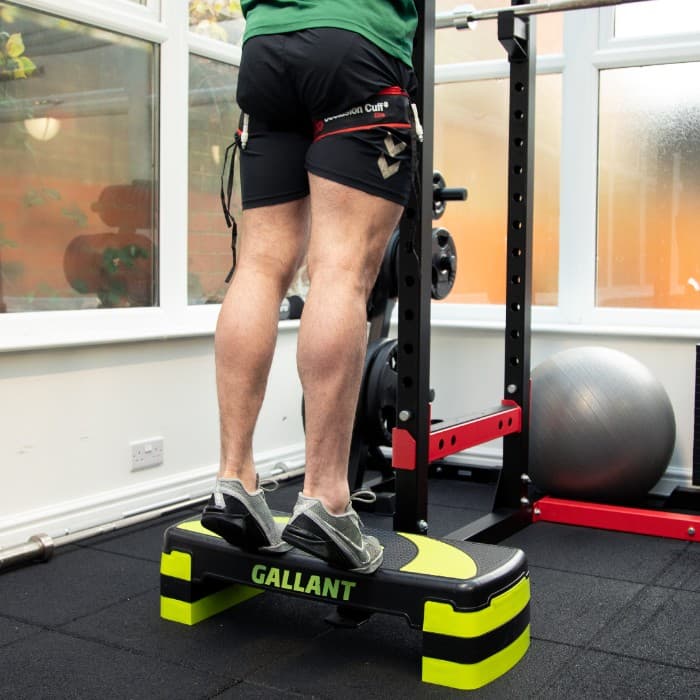Related Posts
Why is Cross Training Important for Runners?
Cross-training is a valuable tool for runners looking to enhance performance, prevent injury, and maintain fitness during off-seasons or recovery periods.
The Carter & George Marathon Preparation Programme
The Carter & George Marathon Preparation Programme is a comprehensive running strength and conditioning initiative designed to optimise performance and mitigate risk of injury.
A Beginner’s Guide to Training for a Marathon
Preparing for your marathon? Get top tips on training and injury prevention from the experts at Carter & George.
Heart Rate Training Zones for Weight Loss

The Most Accurate Way of Designing an Effective, Data-Led Exercise Programme
Losing weight is a common struggle for many people, and finding an effective exercise program can be overwhelming. However, there is a proven exercise method to help you lose weight that is accurate and data-driven: heart rate training zones.
By understanding your heart rate zones, you can develop a program that maximizes the effectiveness of your workouts and helps you reach your weight loss goals.
In this blog post, we will discuss the benefits of heart rate zones, what they are, and how you can use metabolic assessments to determine your zones.
What is Heart Rate Zone Training?
Heart rate training zones are a proven method for weight loss because they allow you to exercise at an intensity level that maximizes fat burn and calorie burn.
When you work out at a high intensity, you burn more calories, which can ultimately lead to weight loss. However, if you work out too hard, you risk injury or burnout – or even reducing how much fat you burn.
 Understanding your heart rate zones allows you to exercise at an intensity that is effective for weight loss without risking injury or burnout.
Understanding your heart rate zones allows you to exercise at an intensity that is effective for weight loss without risking injury or burnout.
Heart rate zones are determined by your maximum heart rate, which is calculated based on your age, or if you can access VO2 Max testing, your ‘lactate threshold’.
Your maximum heart rate is the highest number of beats your heart can achieve in a minute. From there, you can calculate your target heart rate zones, which are based on a percentage of your maximum heart rate.
The different zones represent different levels of intensity, and by working out in these zones, you can target specific fitness goals.
 Zone 1
Zone 1
Zone 1 training is the lowest intensity of exercise, and it targets fat burning. It is also known as your aerobic zone because you are working out at a low enough intensity to get oxygen into your muscles.
In this zone, you should be able to hold a conversation while exercising without getting winded or feeling like you can’t keep up with the pace.
The reason to train in Zone 1 is that it allows you to burn fat at a steady rate, without over-exerting yourself. This type of training also helps to increase your aerobic capacity and improve heart health.
Additionally, it can be used as an effective warm-up or cool-down for more intense exercise sessions. Training in Zone 1 can help you reach your weight-loss goals safely and effectively.
 Zone 2:
Zone 2:
Zone 2 is known as your threshold zone or endurance zone because you are working at a moderate intensity level that requires more oxygen to be delivered to your muscles.
In this zone, you should still be able to carry on a conversation, but it will be more difficult than in Zone 1. You are pushing yourself harder and may start to feel the burn or fatigue.
The reason to train in Zone 2 is that it helps to increase your aerobic capacity and endurance. It also helps you burn more calories, which can lead to weight loss. Additionally, working out in this zone will help you maintain a healthy heart rate during your exercise sessions.
Zone 2 training is the optimum zone to burn fat, making it an essential part of a weight loss training programme.
 Zone 3:
Zone 3:
Zone 3 is known as your anaerobic zone or power-endurance zone because you are pushing your cardiovascular system harder. In this zone, it will be difficult to talk while exercising because you are working so hard.
This type of training helps to build muscular strength and endurance while also burning calories quickly. It is a great way to break through a plateau in your weight loss and push yourself to the next level. However, it is usually used to improve cardiovascular and aerobic fitness.
 Zone 4:
Zone 4:
Zone 4 training is a high intensity exercise level and it is used to improve your anaerobic power and speed. This type of training requires a lot of effort and you should only use it if you are experienced with exercise and have a high fitness level.
Zone 4 training can help you burn calories quickly, but it also puts more stress on your body, so you should use it sparingly. It is best suited for interval training, sprints, and other short bursts of high-intensity exercise.
 Zone 5:
Zone 5:
Zone 5 training is the highest level of exercise intensity and it requires you to push yourself very hard and test your cardiovascular system at capacity. This type of training is used to develop anaerobic power and speed.
It should only be attempted by athletes or people with a high fitness level because it puts a great deal of stress on your body and can lead to injury if done incorrectly – however it can be achieved working with a qualified trainer with experience working with heart rate training zones.
The aim is that you reach your lactate threshold, where lactic acid build up in the muscles is unable to be processed by the body because there is not enough oxygen available. This is known as ‘the wall’.
Zone 5 is used a lot in conjunction with Zone 2 training, when designing a programme to aid losing weight.
 Zone 2 and Zone 5 to Lose Weight
Zone 2 and Zone 5 to Lose Weight
By combining both Zone 2 and Zone 5 training, you can create effective training plans to help you reach your weight loss goals.
Zone 2 is used for fat burning and improving aerobic capacity, while Zone 5 helps to rapidly burn calories. By alternating between the two zones, you can maximize your calorie and fat burn and reach your desired weight goals.
Metabolic Testing
Metabolic assessments, such as PNOE testing that we offer at Carter & George, are an excellent tool for determining your heart rate zones accurately.
They provide a comprehensive analysis of your system vitals to determine the effectiveness of your breathing, lungs, heart, and cells while burning fat or carbohydrates.
This analysis includes information on your calorie burn, carbohydrates and fat burn, V02 Max, metabolic efficiency, heart rate, and power. Moreover, metabolic assessments can determine your personal training zones up to the exact heartbeat.
 It is also a useful assessment to predict your risk of chronic disease such as heart disease, obesity diabetes and metabolic disorders.
It is also a useful assessment to predict your risk of chronic disease such as heart disease, obesity diabetes and metabolic disorders.
Metabolic testing is a cutting-edge technology that was previously only available to professional athletes or elite fitness centres. However, now it is available to everyone through facilities like The Carter & George Practice.
At both our newest clinic in Hitchin, and Hertford, we offer individual testing as well as our signature training plan, EVOLVE.
 What is EVOLVE?
What is EVOLVE?
EVOLVE is a program that offers two full PNOE metabolic assessments, 2 weekly 1-1 strength and conditioning sessions per week, unlimited Evolve member-only classes, a welcome pack, a heart rate monitor, consultations with a nutritionist, bespoke meal plans, and a home program for missed days.
This program provides all the resources and support you need to succeed in your weight loss journey.
By using heart rate zones, and training with our expert team, you can develop an effective training plan that maximizes fat burn while minimizing the risk of injury or burnout.
Additionally, metabolic assessments provide accurate data that helps you determine your heart rate zones, allowing you to create an exercise program that is tailor-made to your fitness goals.
With programs like EVOLVE, you have access to all the resources and support you need to achieve your weight loss goals.
What other methods can help with losing weight?
Weight training:
Training plans that incorporate weight training can be a great way to lose weight, as it burns calories and helps build muscle.
Building more muscle mass boosts your metabolism, which means you burn more calories throughout the day – even when you’re not exercising.
Additionally, resistance training increases strength and endurance, which can help you work out for longer periods of time and become more active overall.
Calorie Deficit:
A calorie deficit is when you consume fewer calories than your body needs to maintain its existing weight. This forces your body to burn fat for fuel, instead of carbohydrates, which can lead to weight loss.
Creating a calorie deficit is an important part of any successful weight loss program. However, it’s important to make sure that you are still consuming enough calories to get the necessary nutrients and fuel your workouts.
Water intake:
Water intake is essential for weight loss because it helps to flush toxins, reduce bloating, and keep you feeling full longer. Additionally, it helps to increase your metabolism so that your body can more efficiently burn calories.
Drinking water also helps to prevent dehydration, which can make you feel tired and sluggish, making it harder to stay active and reach your fitness goals.
High protein diet:
A high protein diet can help with weight loss because it increases your body’s metabolism and helps to reduce hunger. Protein also takes longer to digest than carbohydrates, so you feel fuller for longer after a meal.
Eating enough protein can also help build and maintain muscle mass, which in turn boosts your metabolism and helps you burn more calories throughout the day.
High protein foods are nutrient-dense, but do not have the same number of calories that carbohydrate-heavy foods do – making it easier to stay in a calorie deficit.
Your Healthy Weight is Just Around the Corner
If you have struggled to lose weight in the past, consider using heart rate training zones and metabolic assessments to develop an effective exercise and weight loss plan.
By understanding your heart rate zones, you can maximize the effectiveness of your workout and target your specific fitness goals.
Programs like EVOLVE provide all the resources and support you need to succeed in your weight loss journey. Don’t give up on your goals, call us to discuss how we can help by using heart rate training today!
Looking for Weight Loss help in Hitchin?
Our newest clinic is in the heart of Hitchin town centre. Our clinic in Hitchin hosts our expert team in a private gym, that can help you with any weight loss challenges you may have.
We specialise in those that have tried and failed other methods of weight loss by using a combination of bespoke, data-led exercise plans and nutrition plans.
Our team is comprised of physiotherapists, personal trainers and strength & conditioning experts who bring their background in professional sport, to the general public.
Our clinic in Hitchin is in the market town centre, a short walk from North Hertfordshire Museum, Hitchin Town Hall and the train station (serviced by Great Northern Rail).